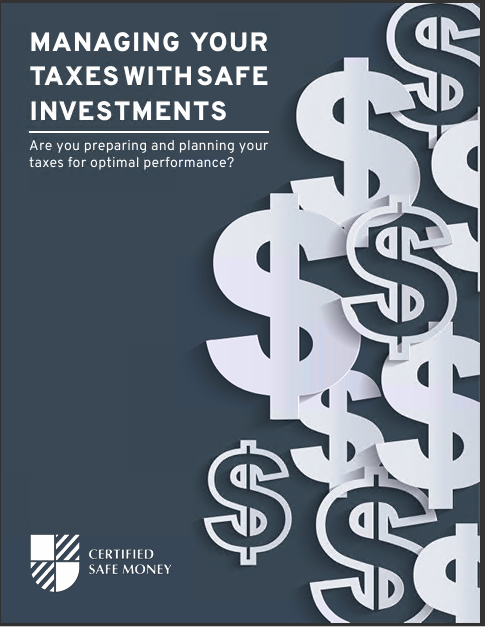Exploring Low-Risk Financial Vehicles: Safeguarding Your Investments
Key Takeaways:
- Prioritize Capital Preservation: Low-risk financial vehicles offer investors the opportunity to safeguard their capital against market fluctuations and economic downturns, providing peace of mind and stability in their investment portfolios.
- Diversify for Stability: Incorporating a mix of low-risk financial vehicles, such as bonds, CDs, money market accounts, and high-quality dividend stocks, into a diversified investment portfolio can help spread risk and reduce overall portfolio volatility while generating steady income.
Introduction:
In today’s uncertain economic climate, many investors are seeking low-risk financial vehicles to protect their investments while still achieving reasonable returns. Low-risk financial vehicles offer stability, security, and peace of mind, making them attractive options for investors of all levels. In this article, we’ll explore the world of low-risk financial vehicles, including safe investments, secure options, and strategies for safeguarding your investments against market volatility.
What Are Low-Risk Financial Vehicles?
Low-risk financial vehicles are investment options that offer relatively stable returns with minimal risk of capital loss. These vehicles prioritize capital preservation and income generation over high returns, making them suitable for investors seeking stability and security in their portfolios. Examples of low-risk financial vehicles include bonds, certificates of deposit (CDs), money market accounts, and high-quality dividend stocks.
Different Types of Low-Risk Financial Vehicles:
- Bonds: Bonds are debt securities issued by governments, municipalities, or corporations to raise capital. They offer fixed interest payments at regular intervals and return the principal amount at maturity. Government bonds, such as Treasury bonds, are considered among the safest investments, offering guaranteed returns backed by the issuing government’s credit.
- Certificates of Deposit (CDs): CDs are time deposits offered by banks and credit unions. They offer fixed interest rates for a specified term, ranging from a few months to several years. CDs are FDIC-insured up to certain limits, providing a high level of security for investors’ principal. They are ideal for investors seeking stable returns and guaranteed income.
- Money Market Accounts: Money market accounts are interest-bearing deposit accounts offered by banks and credit unions. They typically offer higher interest rates than traditional savings accounts and provide check-writing privileges and ATM access. Money market accounts invest in short-term, low-risk securities such as Treasury bills and commercial paper, making them relatively safe investment options.
- High-Quality Dividend Stocks: High-quality dividend stocks are shares of companies that have a long history of paying dividends and stable earnings growth. These companies operate in defensive industries such as utilities, consumer staples, and healthcare, which tend to be less affected by economic downturns. Investing in dividend stocks can provide investors with a reliable source of income and the potential for capital appreciation over time.
Benefits of Low-Risk Financial Vehicles:
- Capital Preservation: Low-risk financial vehicles prioritize capital preservation, protecting investors’ principal from market fluctuations and downturns. This stability provides peace of mind and security, especially for investors nearing retirement or with a low-risk tolerance.
- Steady Income Generation: Many low-risk financial vehicles offer steady income generation through interest payments, dividends, or distributions. This regular income can help meet living expenses, fund retirement, or reinvest for future growth, providing financial stability and flexibility.
- Diversification: Incorporating low-risk financial vehicles into a diversified investment portfolio can help spread risk and reduce overall portfolio volatility. By balancing high-risk, high-return investments with low-risk options, investors can achieve a more stable and resilient portfolio.
Questions to Consider When Exploring Low-Risk Financial Vehicles:
What are Low-Risk Financial Vehicles and How Do They Work?
- Low-risk financial vehicles are investment options that prioritize capital preservation and stability, offering relatively stable returns with minimal risk of capital loss. These vehicles include bonds, CDs, money market accounts, and high-quality dividend stocks. Understanding how these vehicles work and their role in an investment portfolio is essential for investors seeking stability and security.
How Can I Find Safe Investments with Guaranteed Returns?
- Finding safe investments with guaranteed returns involves conducting thorough research and due diligence to identify low-risk financial vehicles with strong credit ratings, stable income streams, and reliable track records. Government bonds, FDIC-insured CDs, and high-quality dividend stocks are examples of safe investments that offer guaranteed or relatively stable returns.
Are There Any Low-Risk Investment Strategies Suitable for Beginners?
- For beginners, low-risk investment strategies provide an excellent introduction to investing while minimizing the potential for capital loss. These strategies focus on capital preservation, steady income generation, and diversification. Examples include investing in diversified bond funds, high-quality dividend stocks, and FDIC-insured CDs. By starting with low-risk options and gradually expanding their investment portfolio, beginners can build confidence and experience in the financial markets.
Conclusion:
Low-risk financial vehicles play a crucial role in protecting investors’ capital, generating steady income, and diversifying investment portfolios. Whether you’re a conservative investor seeking stability or a beginner looking to minimize risk, exploring low-risk financial vehicles offers valuable opportunities to safeguard your investments and achieve long-term financial goals. By understanding the different types of low-risk financial vehicles, their benefits, and key considerations, investors can make informed decisions that align with their financial objectives and risk tolerance levels. Remember to consult with a financial advisor to explore low-risk investment options and develop a customized investment strategy tailored to your individual needs and goals. With careful planning and prudent decision-making, you can build a resilient investment portfolio that withstands market volatility and delivers consistent returns over time.
Contact Information:
Email: erik@erikranberg.com
Phone: 5613285961
Bio:
Erik Ranberg, Certified Federal Retirement Consultant (FRC℠) and Marine Veteran, has a unique ability
to cut through the “fancy speak” and help you understand the complexity of your Federal Benefits. Erik
has over 20 years of experience in the retirement arena assisting public servants at the Federal, State,
Municipal and Educator levels. Erik assists Federal Employees complete their retirement and disability
applications, provides guidance to project and plan retirement income, establish multi-pension/income
streams, and avoid the tax traps that many retirees often fall victim to. Whether you become a client or
not, you will walk away with a thorough, clear, and easy to understand knowledge with respect to your
individual retirement wishes. Erik’s unique background which includes the US Marines, the utility
construction industry and then financial services provides a “no pressure, nothing to sell you” common
sense approach you will enjoy.














